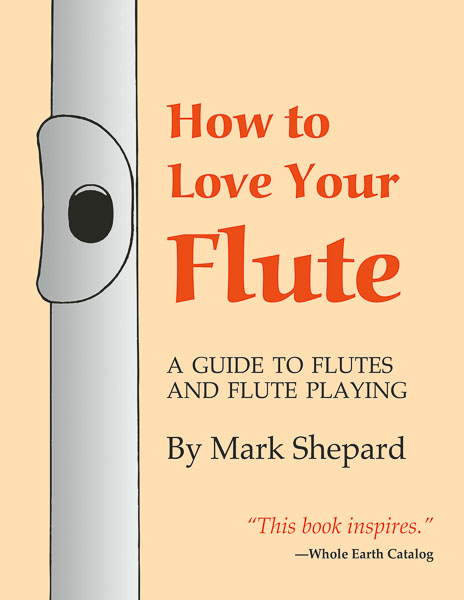Preface, by Paul Horn
Introductions
My Love Affair With the Flute
About This Book
Common Questions From Beginners
How to Love Your Flute
Flute Lore
The World Family of Flutes
South America
North America
Africa
The Middle East
Eastern Europe
Western Europe
India
China
Oceania
Japan
The Story of the Western Flute
The Baroque Flute
The Boehm Flute
Since Boehm
Materials and Manufacture
Looking Ahead
Selection and Care
Finding Your Flute
Buying Name Brands
Metal Flutes—The Flute Hierarchy
Wooden Flutes
Flute Quality—General
Plateau Model, French Model
Other Options and Variations
Features to Look For
Checking Out a Used Flute
Other Sizes of Flutes
Electronic Amplification
Caring For Your Flute
Assembly, Playing, Disassembly
Minor Maintenance
Head joint cork
Repairs
Professional Servicing and Overhaul
Flute Technique
Embouchure and Breath
Getting a Sound—Basic Embouchure
Basic Breathing
Posture
Flute Assembly and Hand Position
Head and Arms
Torso and Legs
Other Aspects
Practicing Posture
Posture Checklist
Playing Notes
Fingering and Blowing Principles
Fingerings
Articulation
More About Embouchure and Breach
Taking Breaths
Intonation
Volume Adjustments
Developing Tone
Exercises
Fingering Technique
Difficult Combinations
Runs
Tuning
Concert Pitch
Tuning With Others
Advanced Techniques
Vibrato
Tonal Variation
Alternative Fingerings, Trills, Tremolos
Multiple-Tonguing
Special Effects
Acoustic Effects
Electronic Effects
Making Music
Scales and Chords
Scales
Chords
Playing by Ear
Copying
Improvisation
Help for the Tone‑Deaf
Reading Music
Learning How
Staff and Clef
Timing
Key Signature and Accidentals
Rests
Repeats
Volume and Dynamics
Tempo and Expression
Miscellaneous Symbols
Transposition
Learning a Piece of Music
Interpretation
Nonclassical Music
Living Music
Expressive Techniques
Beyond Technique—Playing From Within
Modern Folk Flutes
Finding a Folk Flute
Why a Folk Flute?
Where to Find Folk Flutes
Side-Blown Flutes
Shakuhachi
Other End-Blown Flutes
Caring for a Folk Flute
Bamboo
Other Materials
Corks
Playing a Folk Flute
Side-Blown Flutes
Shakuhachi
Other End-Blown Flutes
Appendix
How the Flute Works
A Tube With Holes
Harmonics
Octaves
Miscellaneous Fingering Charts
Baroque Flute, One Key
Eight-Key Flute
Modern Flute With Open G‑Sharp Key
Reading List
General
Flute Technique
Other Flutes
Miscellaneous

